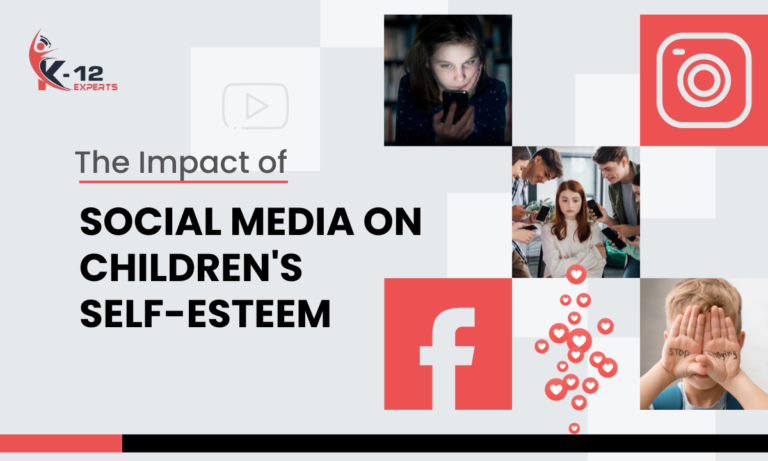You’re about to dive headfirst into the exhilarating world of persuasion with your kids, transforming them into adept communicators who can sway opinions with the sheer force of their reasoning. Think of it as arming them with a superpower: the ability to dissect complex ideas, weave compelling narratives, and bring listeners into their fold, all while wielding evidence like a knight brandishing a sword. They’ll learn the subtle art of empathy, understanding their audience’s desires and fears, turning heated debates into warm discussions. By mastering the craft of argumentation, they’ll not only spot emotional manipulations from a mile away but also navigate through the murky waters of human psychology with grace.
Imagine fostering a space where conflicts bloom into opportunities for understanding, where your kids stand confident, their voices echoing with the richness of persuasive mastery. It’s a journey that promises to sprinkle their paths with the seeds of effective communication, flowering into a garden of influence. Ready to see how this transformative journey unfolds? You’re just on the cusp of discovering a world where words truly have the power to change.
Understanding Persuasion Basics

Grasping the basics of persuasion is key to influencing others’ beliefs or actions through clear and effective communication. The Art of Persuasion isn’t just about getting your point across; it’s a dynamic journey of logic, clarity, and a deep understanding of the audience.
When you’re trying to persuade, especially kids, it’s like starting on an adventure through a jungle of ideas, where each step forward is a carefully chosen word or concept. Learning to navigate this terrain involves recognizing the importance of presenting compelling reasons and evidence in a way that sparks curiosity and engagement.
It’s about molding young minds to appreciate the power of structured thoughts and organized ideas, setting the stage for them to become articulate, thoughtful communicators.
Building a Strong Argument

Now, you’re stepping into the domain of crafting a compelling argument, where identifying key points becomes your guiding light.
You’ll commence on the exciting journey of evidence gathering, a skill that’s akin to being a detective in a world of words and ideas, where every clue strengthens your case.
This stage, brimming with potential, is where your argument starts to take shape, ready to captivate and persuade with unmatched clarity and force.
Identifying Key Points
Identifying key points is essential in crafting a strong argument, as it allows you to build your case on a solid foundation of clear, relevant ideas.
Imagine constructing a castle of logic, where each stone is a key point meticulously chosen for its strength and relevance. This process isn’t just about picking any stones; it’s about selecting the ones that will withstand the tests of critical thinking, logical reasoning, and analytical skills.
It’s a thrilling quest for clarity and persuasion, turning you into a master architect of arguments. As you teach kids to identify these pivotal points, you’re equipping them with the tools to build their own impenetrable fortresses of argument; each stone laid proof of their growing prowess in the art of debate.
Evidence Gathering Techniques
To construct a compelling argument, it’s crucial to master the art of gathering strong, credible evidence. Immerse yourself in the realm of research strategies and data analysis like a detective on a mission. Your toolkit? Books, articles, and those treasure troves known as research studies.
But it’s not just about accumulating information. Source evaluation and fact-checking become your shield against misinformation. Picture navigating through the ocean of data, then emerging with sparkling pearls of expert opinions and case studies that perfectly support your stance.
Add a touch of your personal experiences to give your argument flavor and authenticity. It’s a meticulous yet exciting quest to present your findings in a way that’s as persuasive as it’s engrossing.
Listening and Responding
Mastering the art of listening and responding is key to engaging in effective argumentation. Imagine the power of:
- Active engagement: Locking eyes, nodding along, and letting the speaker know you’re with them every step of the way.
- Empathetic responses: You’re not just hearing words; you’re feeling them, understanding the emotion behind each argument.
- Thoughtful interactions: It’s not about quick comebacks but about adding depth to the dialogue.
- Confidence in expression: With every empathetic nod and logical response, watch as your child’s ability to persuade blossoms.
You’re not just teaching them to argue; you’re nurturing a generation of thoughtful, empathetic communicators. Now, that’s something to marvel at!
Recognizing Emotional Appeals

Understanding how emotional appeals tug at heartstrings can greatly enhance a child’s ability to navigate and dissect arguments. These persuasive techniques, woven with the threads of empathy, fear, or joy, aren’t just about swaying opinions but are a fascinating dance of cognitive biases and critical thinking.
Teaching your kids to spot emotional manipulation isn’t just about initiating their argumentative skills; it’s about commencing a thrilling exploration of human psychology. By delving into the domain of emotional appeals, they learn to differentiate between genuine persuasion and cunning manipulation, turning them into savvy evaluators of arguments.
This journey not only boosts their critical thinking but also lays the groundwork for a deeper understanding of empathy development and argument evaluation without falling prey to the siren calls of emotional exploitation.
Encouraging Empathy

You’re setting off on a captivating journey into the core of empathy, where grasping different perspectives and nurturing compassionate listening take center stage.
It’s an enchanting domain where kids learn not just to debate but to connect, listen, and truly hear what others are saying, transforming every conversation into an opportunity for growth and connection.
Marvel at the power of empathy in argumentation, as it transforms young debaters into empathetic listeners and persuasive speakers, all while keeping the discourse respectful and deeply human.
Understanding Different Perspectives
When kids learn to embrace empathy in their arguments, they start seeing the world through others’ eyes, enriching their discussions with diverse perspectives. This magical transformation isn’t just about winning debates; it’s about weaving the rich tapestry of human experience into every conversation.
- Empathy exercises invite kids to step into someone else’s shoes, making their arguments not just smart but heart-smart.
- Perspective takes turns the kaleidoscope of viewpoints, revealing patterns and colors of thought they’ve never imagined.
- Diversity awareness illuminates the spectrum of human experience, encouraging kids to explore beyond their own backyard.
- Innovative dialogue games challenge them to argue from perspectives they don’t hold, turning the debate into an exhilarating adventure of the mind and soul.
Cultivating Compassionate Listening
Cultivating compassionate listening in kids means teaching them to tune into and genuinely understand what others are saying, laying the groundwork for empathy and stronger connections.
It’s about turning every chat into a magical journey of empathy development, where active listening isn’t just a skill—it’s a superpower! Imagine transforming squabbles into moments of profound relationship building, all through the art of paying attention.
By emphasizing empathy, we’re not just teaching kids to hear but to feel the stories behind the words, making their interactions a canvas for compassionate interactions. It’s a dazzling way to enhance their social and emotional intelligence, ensuring every argument is less about winning and more about connecting.
Truly, it’s where the art of persuasion meets the heart of understanding.
Practicing Persuasion Techniques
To effectively bolster their argumentation skills, children should engage in role-playing scenarios that challenge them to present and defend their viewpoints persuasively. Imagine the excitement as they immerse themselves in:
- Role-Playing Scenarios: Kids step into various roles, arguing for a cause with zest and zeal.
- Argument Analysis: Dissecting arguments like skilled detectives, seeking strengths, and uncovering weaknesses.
- Persuasive Communication: Crafting words with the precision of a poet, aiming to sway with elegance.
- Feedback Sessions: A gathering of minds where constructive criticism is the golden ticket to persuasive prowess.
This vibrant approach not only sharpens their persuasive skills but also prepares them for the grand stage of real-life situations, where words wield the power to change minds and hearts.
Resolving Conflicts Peacefully

Empowering kids with effective argumentation skills paves the way for them to resolve conflicts peacefully and constructively. Imagine a world where children wield their words like seasoned diplomats, steering the tumultuous seas of disagreement with grace.
By teaching them peaceful communication and conflict-resolution strategies, you’re fundamentally equipping them with an invisible shield against discord. Encouraging empowering negotiation skills not only fosters mutual solutions but also cultivates a garden of understanding.
Through compassionate listening, kids learn to respond with maturity beyond their years, transforming potential battlegrounds into forums of collaborative problem-solving. It’s nothing short of magical, watching them morph into mini ambassadors of peace, handling disputes with a wisdom that belies their tender age.
Frequently Asked Questions
What Are the 4 Steps of the Art of Persuasion?
To master persuasion, you’ll first build confidence and then craft messages that resonate. Understanding your audience is key. You’ll establish credibility, appeal to emotions, offer logical reasons, and finally, call them to action.
What Are the 3 Key Elements of Persuasive Arguments?
You need to master three key elements for persuasive arguments: emotional appeal to connect, logical reasoning to convince, and ethical considerations to build trust. They’re your toolkit for influencing others effectively and innovatively.
What Is the Importance of Persuasion in Argumentation?
Oh, because arguing without persuasion is like shouting into the void, right? You’ll boost your emotional intelligence, hone your listening skills, and sharpen your decision-making. It does not just talk; it’s crafting arguments that actually resonate and inspire action.
Why Is the Art of Persuasion an Important Skill?
The art of persuasion sharpens your critical thinking and boosts emotional intelligence. It amplifies your social influence, enabling innovative solutions and impactful change. Mastering it means you’re adept at maneuvering through complex interactions and challenges.
Conclusion
You’ve initiated a magical journey, weaving through the intricate tapestry of persuasion, mastering the art of crafting arguments as robust as a knight’s armor, and dancing through dialogues with the grace of a diplomat. With your newfound skills, you’re not just speaking; you’re enchanting, turning the battleground of debate into a symphony of understanding.
Remember, wielding these powers of persuasion isn’t just about winning; it’s about bridging worlds, one empathetic, compelling conversation at a time.
So, go forth and dazzle!




